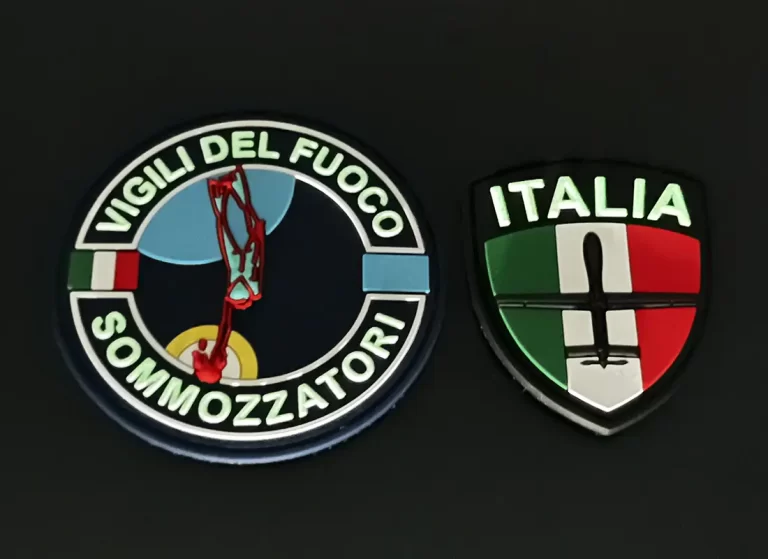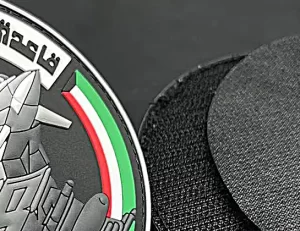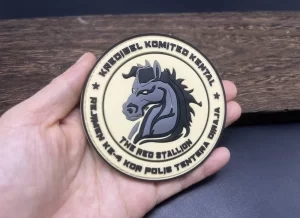How to attach custom PVC patches to clothing?
Custom PVC patches can add a unique, personalized touch to your clothing, whether it’s a denim jacket, a backpack, or a hat. However, the key to a long – lasting and visually appealing result lies in the proper attachment method. Here are some common ways to attach custom PVC patches to your garments.
Sewing
Tools You’ll Need
Sewing is a classic and reliable method. For this, you’ll need a needle, thread that matches the color of your patch or the clothing (or a contrasting color for a more decorative effect), and a pair of scissors. A thimble can also be helpful to protect your finger while pushing the needle through the fabric.
The Sewing Process
Lay the clothing flat on a stable surface and position the PVC patch exactly where you want it. Start by making a small knot at the end of the thread. Insert the needle from the back of the fabric, coming up through the edge of the patch. Make small, even stitches around the perimeter of the patch. Try to keep the stitches close together for a more secure hold. For patches with a complex shape, take your time to follow the curves accurately. When you reach the end, tie off the thread with a few knots on the back of the fabric and trim the excess thread. This method is particularly suitable for patches that will be exposed to a lot of wear and tear, like those on the elbows or knees of denim jeans.
Heat – Sealing
Equipment Required
Heat – sealing is a popular and relatively quick method. You’ll need a household iron or a heat press if you have access to one. Additionally, some PVC patches come with a heat – activated adhesive backing, but if yours doesn’t, you can use an iron – on adhesive tape.
Heat – Sealing Steps
First, ensure the clothing and the patch are clean and dry. Place the PVC patch on the desired location of the clothing. If using an iron – on adhesive tape, cut a piece slightly larger than the patch, place it between the patch and the fabric, and peel off the protective paper. Set your iron to the appropriate heat setting. For most fabrics, a medium – high heat without steam is suitable, but always check the care label of the clothing. Place a thin cloth, like a pressing cloth, over the patch to protect it from direct contact with the iron. Press the iron firmly on the patch for about 10 – 15 seconds, applying even pressure across the entire surface. Lift the iron and check if the patch is adhered. If not, press for a few more seconds. Heat – sealing is great for patches on items like t – shirts or backpacks where a quick and easy attachment is desired.
Using Adhesive Glue
Selecting the Right Glue
There are special fabric – friendly adhesives available for attaching PVC patches. Look for a glue that is specifically designed for bonding PVC to fabric. Superglue is not recommended as it can make the fabric stiff and may not provide a long – lasting bond. A fabric – glue with good flexibility is ideal as it will allow the fabric to move naturally without the patch peeling off.
Applying the Glue
Place the clothing on a flat surface and position the patch. Apply a thin, even layer of glue around the edge of the patch. You can use a small brush or the applicator tip of the glue bottle for precision. Carefully place the patch on the fabric, pressing it down firmly to ensure good contact. Hold the patch in place for a few minutes to allow the glue to start setting. Avoid moving the clothing or the patch for at least an hour to let the glue fully dry and bond. This method can be useful for attaching patches to delicate fabrics where sewing or heat – sealing may cause damage.
Hook – and – Loop Fasteners (Velcro)
Preparation
Hook – and – loop fasteners, like Velcro, offer a convenient way to attach and remove PVC patches. You’ll need a strip of the hook part and a strip of the loop part of the Velcro. Cut the strips to fit the perimeter of the patch or in a pattern that will provide sufficient adhesion.
Attachment Process
Sew or use adhesive to attach the loop part of the Velcro to the back of the PVC patch. Make sure it’s firmly attached. On the clothing, attach the hook part of the Velcro in the corresponding position where you want the patch to be. When you want to attach the patch, simply press the patch onto the clothing, and the hook – and – loop fasteners will stick together. This method is great for those who want the flexibility to change patches frequently, such as on a jacket for different occasions.
In conclusion, each method of attaching custom PVC patches to clothing has its own advantages. Consider the type of fabric, the location of the patch, and your personal preference when choosing the attachment method. With the right approach, your custom PVC patches will enhance your clothing and stand the test of time.



